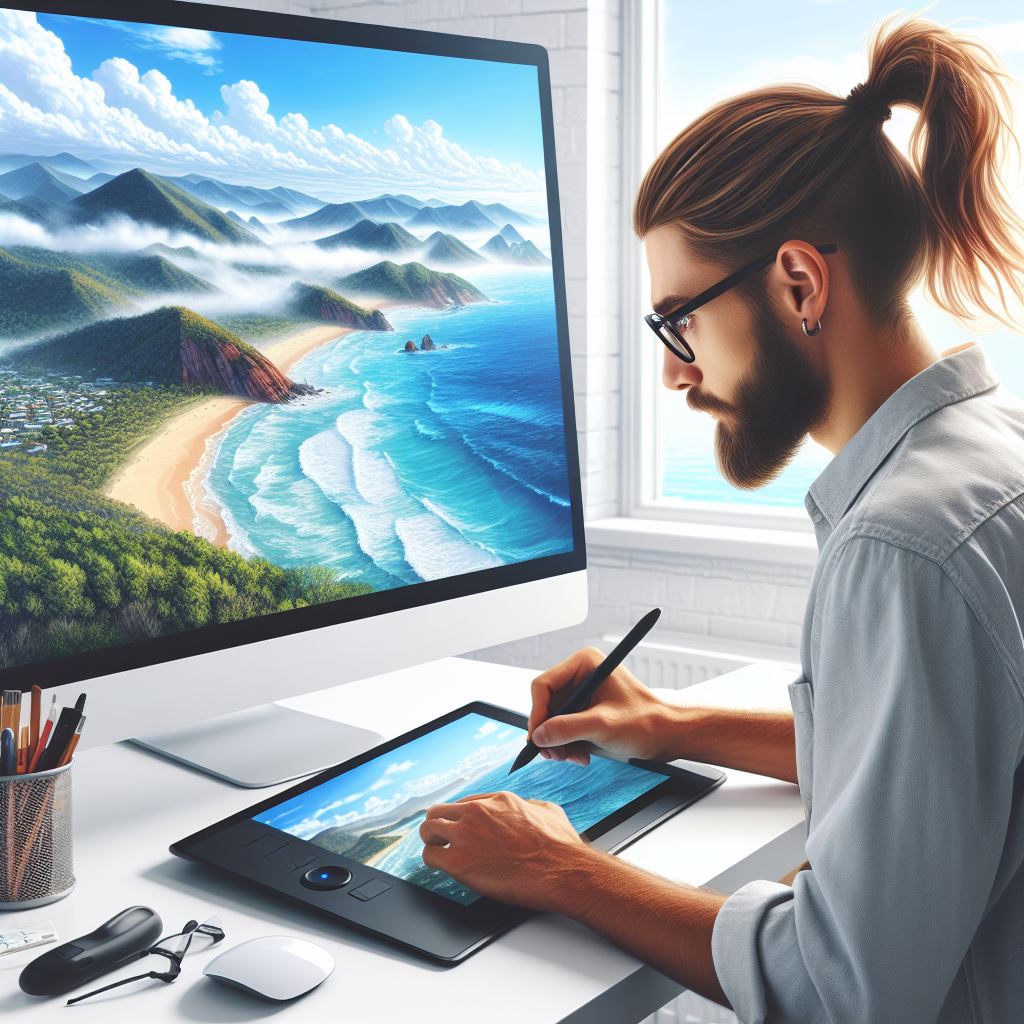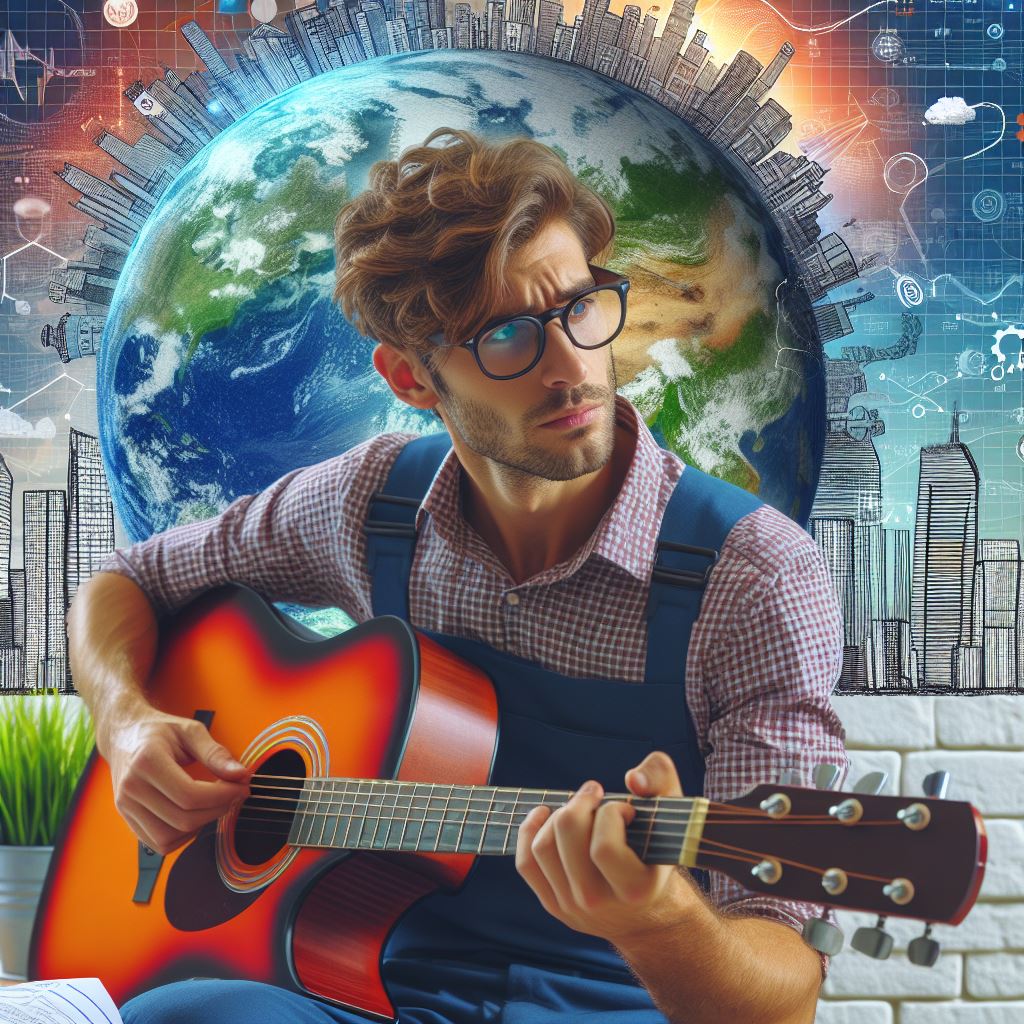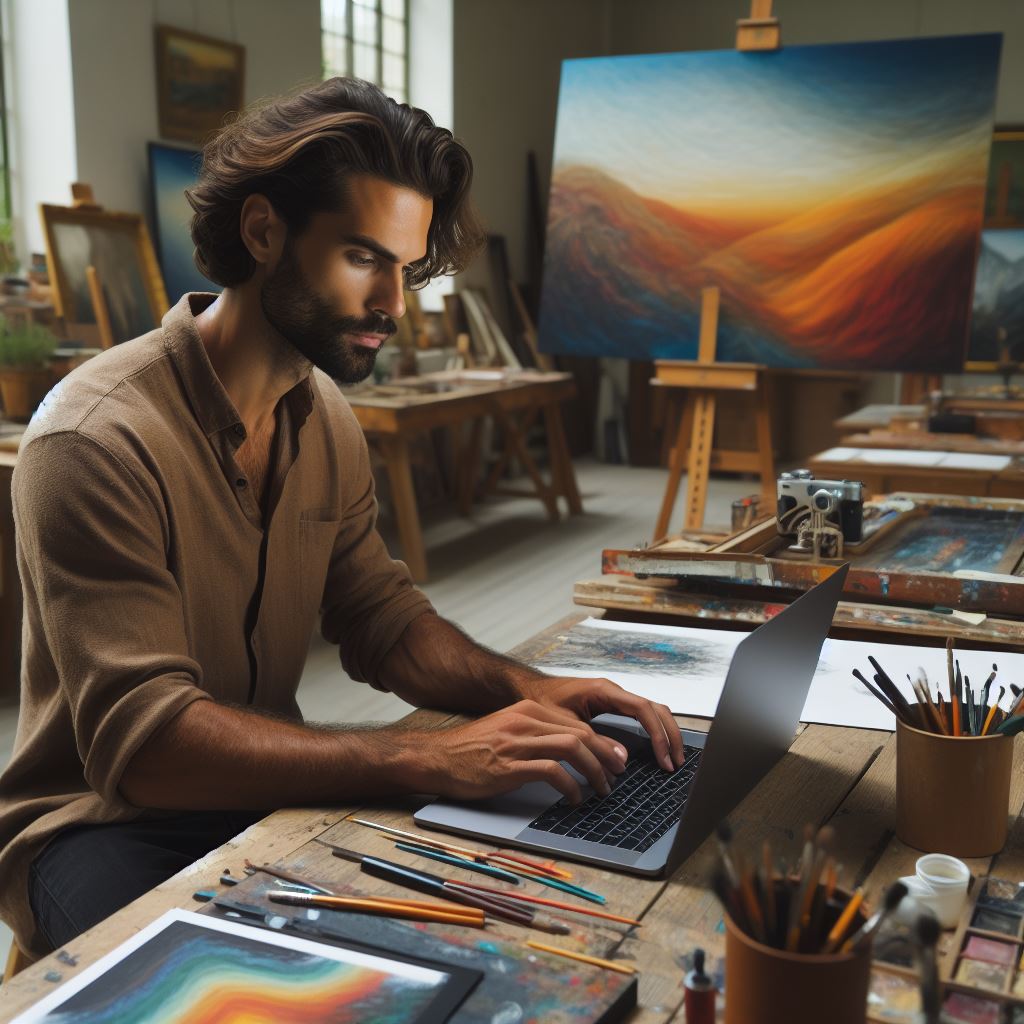Introduction
Explanation of digital art
Digital art refers to artistic creations that are made using digital technology, such as computers and software. It has become increasingly significant in Australian media due to its versatility and ability to engage audiences in novel ways.
Digital art offers numerous advantages over traditional forms of art, such as painting or sculpting. With digital tools, artists can seamlessly blend different elements, experiment with various techniques, and easily make modifications to their work.
This flexibility allows for greater artistic expression and innovation.
Importance of digital art in Australian media
In the realm of Australian media, digital art plays a pivotal role in capturing the attention of audiences. It enables media outlets to create visually striking and captivating content that stands out in a crowded digital landscape.
Whether it’s through interactive graphics, animated illustrations, or immersive virtual reality experiences, digital art enhances storytelling and helps convey complex information in a visually appealing manner.
Moreover, digital art has revolutionized advertising and branding in Australian media. Companies can now employ digital techniques to create visually stunning campaigns that resonate with their target audience.
Through eye-catching visuals and motion graphics, digital art enables brands to communicate their messages effectively and leave a lasting impression.
Additionally, digital art has fostered a vibrant and inclusive community of artists in Australia. Through social media platforms and online galleries, artists can showcase their work to a global audience.
This accessibility has provided artists with unprecedented opportunities for exposure and collaboration, contributing to the overall growth and recognition of Australian digital art.
In a nutshell, digital art has become an indispensable component of Australian media. Its versatility, visual appeal, and accessibility have made it essential in captivating audiences, conveying messages effectively, and fostering a thriving artistic community.
As technology continues to advance, it will be fascinating to witness the evolving trends and possibilities in Australian digital art.
Traditional art and digital art have their own unique characteristics and advantages.
Traditional art is created using traditional mediums such as paints, pencils, and brushes. It often requires physical materials and tools to produce a piece. Digital art, on the other hand, is created using digital tools such as graphic tablets and software like Photoshop.
Comparison between traditional art and digital art
When comparing traditional art and digital art, one of the main advantages of digital art is its accessibility. Digital art can be created and edited using a computer or tablet, making it more accessible to a wider range of people.
Traditional art, on the other hand, may require access to specific materials and tools, limiting its accessibility.
Advantages of digital art in terms of accessibility, flexibility, and convenience
Another advantage of digital art is its flexibility. Digital tools allow for easy manipulation of colors, shapes, and sizes, making it easier to experiment and make changes to a work of art. Traditional art, on the other hand, often requires more time and effort to make changes or corrections.
Convenience is also a key advantage of digital art. With digital tools, artists can create anywhere and at any time. They can easily carry their work with them without the need for physical materials or bulky equipment.
Traditional art, on the other hand, may require a dedicated studio space and the transportation of materials.
In addition to these advantages, digital art also offers a wide range of techniques and styles that are unique to the digital medium. From digital painting to 3D modeling and animation, digital art allows artists to explore new possibilities and push the boundaries of traditional art.
However, it’s important to note that traditional art still holds its own value and charm. The tactile experience of working with physical materials and the craftsmanship involved in traditional art can create a unique sense of connection and authenticity.
In general, while traditional art and digital art have their own strengths and advantages, digital art offers accessibility, flexibility, and convenience.
With technology constantly evolving, digital art trends in Australian media will continue to shape and redefine the art industry.
Whether it’s through digital painting, animation, or virtual reality experiences, digital art is becoming an increasingly important and prevalent form of artistic expression in Australia.
Rise of Digital Art in Australia
The rise of digital art in Australia has been a significant trend in the media industry. With advancements in technology and the increasing popularity of digital platforms, Australian artists have embraced this medium to showcase their talent and creativity.
This section will explore the growing popularity of digital art in the Australian media industry and discuss examples of successful Australian digital artists and their impact on the industry.
Growing popularity of digital art in the Australian media industry:
- Digital art has gained immense popularity in Australia due to its accessibility and versatility.
- The rise of social media platforms has provided digital artists with a global audience to showcase their work.
- Australian media outlets have recognized the value of digital art and frequently feature it in their publications.
- Digital art allows for experimentation and the fusion of different artistic mediums, attracting a diverse audience.
- The convenience of creating and sharing digital art has contributed to its increasing popularity among Australian artists.
- Artists are using digital platforms to explore new styles, techniques, and innovative ways of storytelling.
Examples of successful Australian digital artists and their impact on the industry:
Craig Redman
- Craig Redman is a renowned Australian digital artist known for his distinctive illustration style.
- His bold and colorful artworks have gained international recognition and have been featured in various media outlets.
- Redman’s impact on the industry is evident through his collaborations with top fashion brands and iconic publications.
Gemma O’Brien
- Gemma O’Brien is a prominent Australian lettering artist who has made a significant impact in the digital art scene.
- Her unique typographic designs have been featured in advertising campaigns and exhibitions worldwide.
- O’Brien’s success has inspired a new wave of Australian digital artists, encouraging them to explore typography as a form of artistic expression.
CJ Hendry
- CJ Hendry is an Australian hyperrealistic digital artist known for her intricate and detailed drawings.
- Her works have captivated audiences globally and have been exhibited in prestigious art galleries.
- Hendry’s ability to create mesmerizing digital art has pushed the boundaries of realism in the industry.
Jess Johnson
- Jess Johnson is an Australian digital artist who combines traditional and digital mediums to create immersive installations.
- Her intricate and surreal artworks have garnered critical acclaim and have been showcased internationally.
- Johnson’s innovative approach to digital art has challenged traditional artistic conventions and inspired emerging artists in Australia.
Reko Rennie
- Reko Rennie is an Indigenous Australian artist known for blending traditional Indigenous art with contemporary digital techniques.
- His captivating digital artworks explore themes of identity, cultural heritage, and social justice.
- Rennie’s unique blend of traditional and digital art has made a significant impact in the Australian media industry, amplifying Indigenous voices.
Basically, the rise of digital art in Australia has been fueled by its accessibility, versatility, and the advancements in technology. Australian digital artists have embraced this medium, attracting a global audience through social media platforms.
The impact of successful Australian digital artists like Craig Redman, Gemma O’Brien, CJ Hendry, Jess Johnson, and Reko Rennie has been significant, inspiring new artistic expressions and pushing the boundaries of the industry.
Digital art in Australia continues to thrive, offering exciting opportunities for both artists and audiences alike.
Your Personalized Career Strategy
Unlock your potential with tailored career consulting. Get clear, actionable steps designed for your success. Start now!
Get StartedEmerging Digital Art Trends
As technology continues to advance, the field of digital art in Australia is constantly evolving. Artists are exploring new possibilities and pushing the boundaries of what is possible with digital mediums. In this section, we will delve into some of the emerging trends in Australian digital art.
Exploration of current trends in Australian digital art
- Artists in Australia are actively engaged in exploring various current trends in digital art.
- These trends include the use of interactive installations, data visualization, and generative art.
- Artists are experimenting with different techniques and mediums to create unique digital artworks.
- They are exploring the intersection of traditional art forms with digital technology.
- Collaborations between artists from different disciplines are becoming more common, resulting in innovative digital art projects.
- The exploration of current trends in Australian digital art is driving the evolution of the art scene in the country.
Use of augmented reality and virtual reality in digital art
- Augmented reality (AR) and virtual reality (VR) have gained significant popularity in Australian digital art.
- Artists are using AR and VR technologies to create immersive digital art experiences.
- AR allows viewers to interact with digital artworks in real-world environments.
- VR provides a fully immersive experience, transporting viewers into a virtual world.
- These technologies enable artists to push the boundaries of traditional art mediums and engage audiences in new and exciting ways.
- The use of AR and VR in digital art is transforming the way artists and viewers perceive and interact with artworks.
Incorporation of artificial intelligence in creating digital art
- Artificial intelligence (AI) is increasingly being utilized by Australian artists in the creation of digital art.
- AI algorithms can generate unique and unexpected visual outputs based on input data.
- Artists are using AI to explore new possibilities and push the boundaries of creativity in digital art.
- AI-powered tools and software are making it easier for artists to experiment and iterate their digital artworks.
- AI-generated art challenges traditional notions of authorship and raises questions about the role of machines in the creative process.
- The incorporation of AI in digital art is opening up new avenues for artistic expression and pushing the boundaries of what is possible.
In review, the field of digital art in Australia is witnessing exciting developments and emerging trends. Artists are actively exploring current trends, such as interactive installations and generative art, to create unique digital artworks.
The use of augmented reality and virtual reality is providing immersive experiences for viewers, while the incorporation of artificial intelligence is pushing the boundaries of creativity.
These emerging trends are shaping the future of Australian digital art and opening up new possibilities for artistic expression.
Read: Music Production: A Guide for Aussies
Influence of Social Media
Social media platforms have played a significant role in promoting and showcasing digital art in Australia. The impact they have had on the art industry is undeniable, as they have provided immense opportunities for digital artists to gain recognition.
Role of social media platforms in promoting and showcasing digital art in Australia
- Social media platforms such as Instagram, Facebook, and Twitter have become essential tools for artists to showcase their work.
- Artists can create dedicated pages or accounts where they can regularly update their audience with their latest digital art pieces.
- These platforms allow artists to reach a wide audience, breaking geographical barriers and enabling international exposure.
- By utilizing features like hashtags and sharing options, artists can increase their visibility and engagement with potential art enthusiasts.
- Social media platforms also provide direct communication channels between artists and their followers, allowing for feedback and interaction.
- Through comments and messages, artists can build a community and establish connections with other artists and potential buyers.
How social media has democratized the art industry and provided opportunities for digital artists to gain recognition
- Social media has revolutionized the art industry by breaking down traditional barriers of entry and democratizing the field.
- In the past, artists relied heavily on galleries and exhibitions to showcase their work and gain recognition.
- Not all artists had access to these platforms, creating a hierarchical system that limited opportunities for many.
- However, social media has changed this landscape, allowing artists to exhibit their work independently, regardless of their background or connections.
- Artists can now build their own online presence, attracting attention and recognition solely based on the quality of their digital art.
- This has opened doors for artists who may have been overlooked in traditional art circles, giving them a chance to shine.
- Furthermore, social media serves as a marketplace where artists can directly sell their artwork to interested buyers.
- Platforms like Instagram and Facebook have enabled artists to tap into a global market, expanding their reach and potential customer base.
- Artists no longer need extensive resources or intermediaries to sell their work and can establish themselves as independent entrepreneurs.
- The power of social media lies in its ability to connect artists with a vast audience, allowing them to share their creativity instantly and effortlessly.
Therefore, social media has had a profound impact on the digital art scene in Australia. It has provided a platform for artists to promote and showcase their work, breaking down barriers and allowing for global exposure.
By democratizing the art industry, social media has given digital artists a chance to gain recognition and connect with art enthusiasts around the world.
Read: Australian Music Awards: A Closer Look

Collaboration between Digital Artists and Traditional Media
Collaborations between digital artists and traditional media outlets in Australia have gained significant momentum in recent years, shaping the evolving landscape of digital art trends.
By fusing the creative capabilities of digital artists with established media platforms, these collaborations have opened up exciting avenues for innovation, exploration, and engagement.
Here, we explore some examples of such collaborations and the benefits they bring to both artists and media outlets.
Examples of collaborations between digital artists and traditional media outlets in Australia:
- The Australian Broadcasting Corporation (ABC) partnered with renowned digital artist Joe Hamilton to create captivating visual content for its online news platform.
Through this collaboration, Hamilton’s unique artistic vision was integrated into the storytelling process, enriching the visual experience for users and reimagining traditional news narratives. - Vogue Australia collaborated with digital artist Emma Procter to showcase her digital illustrations in their print magazine.
This collaboration not only injected a fresh and modern aesthetic into the publication but also provided Procter with a platform to reach a wider audience, gaining recognition and exposure for her work. - The Sydney Morning Herald collaborated with digital artist Tomislav Tikulin to create captivating cover designs for their weekend magazine.
These visually striking artworks garnered attention and sparked curiosity among readers, enticing them to delve into the stories within the magazine. The collaboration allowed Tikulin’s art to be seen by a broader audience, expanding his reach as an artist.
Benefits of integrating digital art into traditional media platforms
Enhancing visual storytelling, the integration of digital art into traditional media broadens narrative potential and captivates audiences.
Digital artists, introducing innovative techniques, elevate content impact and relevance, fostering collaboration for a more immersive experience.
Traditional platforms, struggling with younger audiences, bridge the gap by incorporating digital art, increasing engagement and encouraging participation.
Collaboration with digital artists differentiates outlets, showcasing a forward-thinking identity that attracts audiences valuing creativity and innovation.
These collaborations introduce fresh perspectives, fostering diversity and inclusivity in Australian media content, exploring new themes and narratives.
Collaborations between digital artists and traditional media outlets shape the landscape, introducing innovative storytelling and providing wider exposure.
Integrating digital art enhances engagement and appeal in traditional media, infusing creativity and innovation, establishing modern and culturally relevant platforms.
Stand Out with a Resume That Gets Results
Your career is worth more than a generic template. Let us craft a resume and cover letter that showcase your unique strengths and help you secure that dream job.
Get HiredThis collaboration serves as a testament to the dynamic nature of Australian media, evolving through partnerships.
Read: Building a Music Career in Australia
Discover More: Directing Commercials in Australia: A Guide
Digital Art and Indigenous Culture
The intersection between digital art and Indigenous culture in Australia has opened up a whole new world for Indigenous artists to preserve and share their rich cultural heritage. Digital art has become a powerful platform for them to express their traditions and connect with a global audience.
Preserving and Sharing Cultural Heritage
Digital art provides Indigenous artists with a dynamic medium to document and pass on their cultural knowledge and stories. Through vibrant visuals, animation, and interactive elements, they can create immersive experiences that educate and entertain viewers.
Indigenous artists preserve and share their cultural heritage globally by embracing digital art, transcending geographical and cultural boundaries. This helps to counteract the erasure and marginalization of Indigenous stories and traditions.
Revitalizing Traditional Art Forms
Digital art allows Indigenous artists to incorporate traditional art forms into contemporary expressions, breathing new life into ancient practices. They can fuse traditional techniques such as dot painting, bark painting, and sand art with digital tools and technologies.
This blending of traditional and digital techniques creates unique and visually stunning artworks that capture the essence of Indigenous culture while also reflecting the artist’s individual creativity and innovation.
It represents a form of cultural resilience and adaptation in the face of ongoing change.
Storytelling and Connection
Storytelling has always been an integral part of Indigenous culture, serving as a means of passing down knowledge from one generation to another. Digital art offers Indigenous artists a powerful platform to continue this tradition in a contemporary context.
Through digital storytelling, Indigenous artists can share their personal narratives, legends, and ancestral stories with a broader audience.
They can incorporate multimedia elements such as audio recordings, videos, and interactive features, creating a multi-sensory experience that deeply engages viewers.
Engaging with Global Audiences
One of the significant advantages of digital art is that it transcends physical boundaries, allowing Indigenous artists to reach a global audience. The internet and social media platforms have become key channels for promoting and distributing their artwork.
Indigenous artists can showcase their digital creations on websites, online galleries, and virtual exhibitions, enabling them to connect directly with art enthusiasts, collectors, and curators from all over the world. This exposure opens up new opportunities for collaboration, recognition, and economic empowerment.
Challenges and Opportunities
While digital art has provided Indigenous artists with immense opportunities, it also presents challenges. Access to technology, digital skills, and reliable internet connections can be limited in some remote Indigenous communities.
Initiatives actively provide training, resources, and support to Indigenous artists, aiming to bridge the digital divide.
Organizations and institutions are partnering with Indigenous communities to ensure that they have the necessary tools and knowledge to fully participate in the digital art realm.
Transform Your LinkedIn for Maximum Impact
Elevate your professional brand with a LinkedIn profile that attracts recruiters, showcases your expertise, and maximizes opportunities. Stand out in your industry with a profile built for success.
Boost ProfileDigital art has emerged as a platform where Indigenous artists can preserve, revitalize, and share their cultural heritage with the world. It enables them to create visually captivating artworks, engage in storytelling, and connect with global audiences.
By embracing digital technology, Indigenous artists are reclaiming their narratives, challenging stereotypes, and fostering cultural pride.
As this intersection between digital art and Indigenous culture continues to evolve, it holds the potential to empower Indigenous communities and promote cross-cultural understanding on a global scale.
Read: The Evolution of Australian Music Genres
Conclusion
In closing, digital art has become an integral part of the Australian media industry. Its ability to connect with audiences through visuals and storytelling cannot be underestimated.
As technology continues to advance, the future potential of digital art in the industry is limitless.
Whether it’s through virtual reality, augmented reality, or other emerging technologies, digital art has the power to shape the future of media in unimaginable ways.
The possibilities are endless, and Australian artists and media professionals have a unique opportunity to push the boundaries of creativity and innovation.
By embracing digital art, the industry can continue to captivate audiences and stay at the forefront of global trends.
It’s an exciting time for digital art in Australian media, and the future looks bright. So, let’s keep pushing the boundaries and exploring the endless possibilities that digital art has to offer. Together, we can shape the future of media and create unforgettable experiences for audiences.




